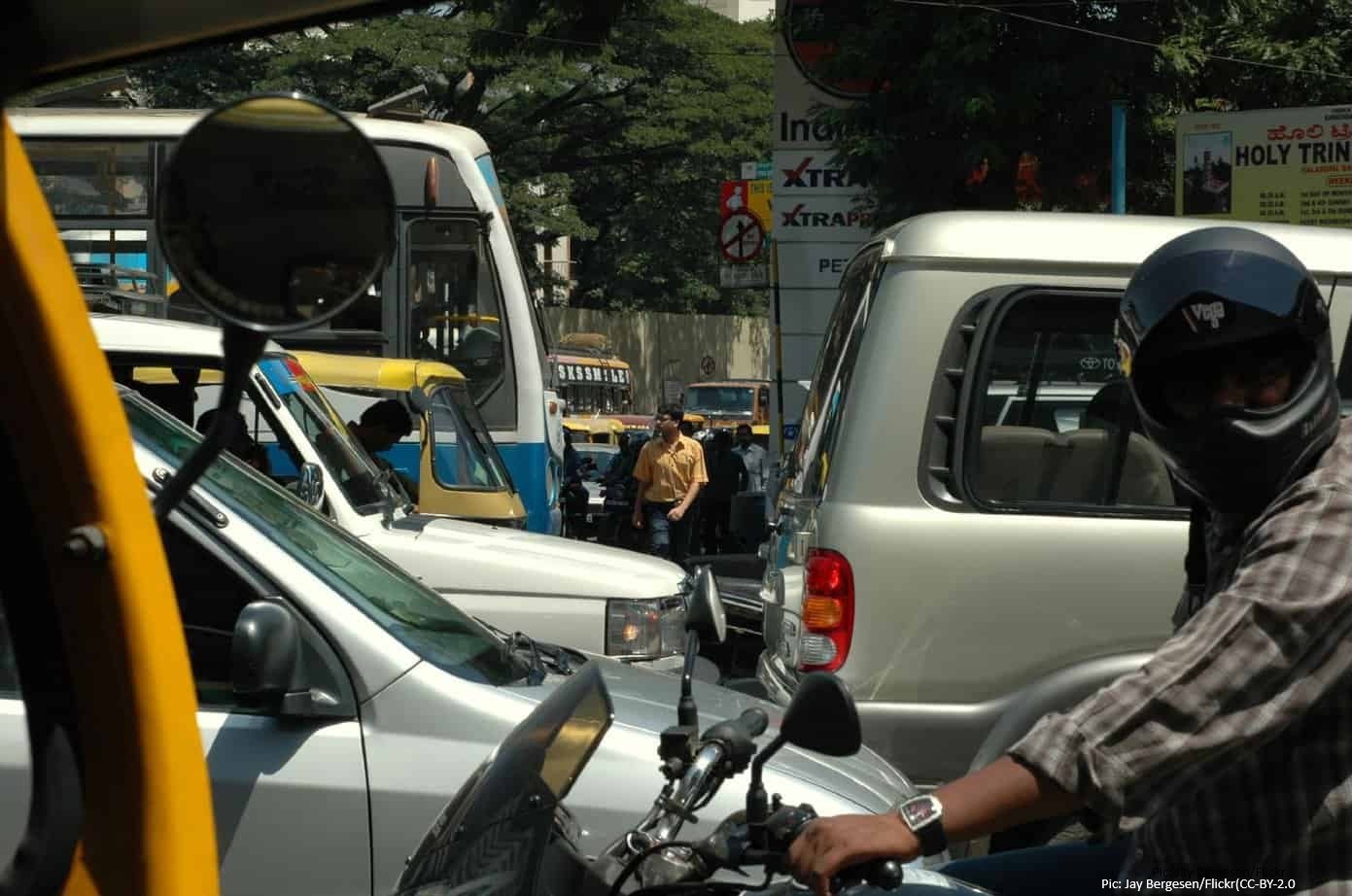Mumbai has among the highest number of private vehicles in India closing in on 5 million vehicles. With such a high number of vehicles and high congestion, traffic violations are expected to be high and to be an important source of revenue for the state.
Challans data for 2024 paints an expected picture with 59 Lakh challans, more than the number of vehicles in the city. These challans were issued for a total amount of Rs. 478.4 Cr. However, a closer look paints a different picture.
Unpaid Challans predominate
Of the 59 Lakh challans, only a third of the challans, or 20.2 lakh challans were paid by the violators. The rest are unpaid, generated through automation, waiting for the motorists to check their violations and pay.
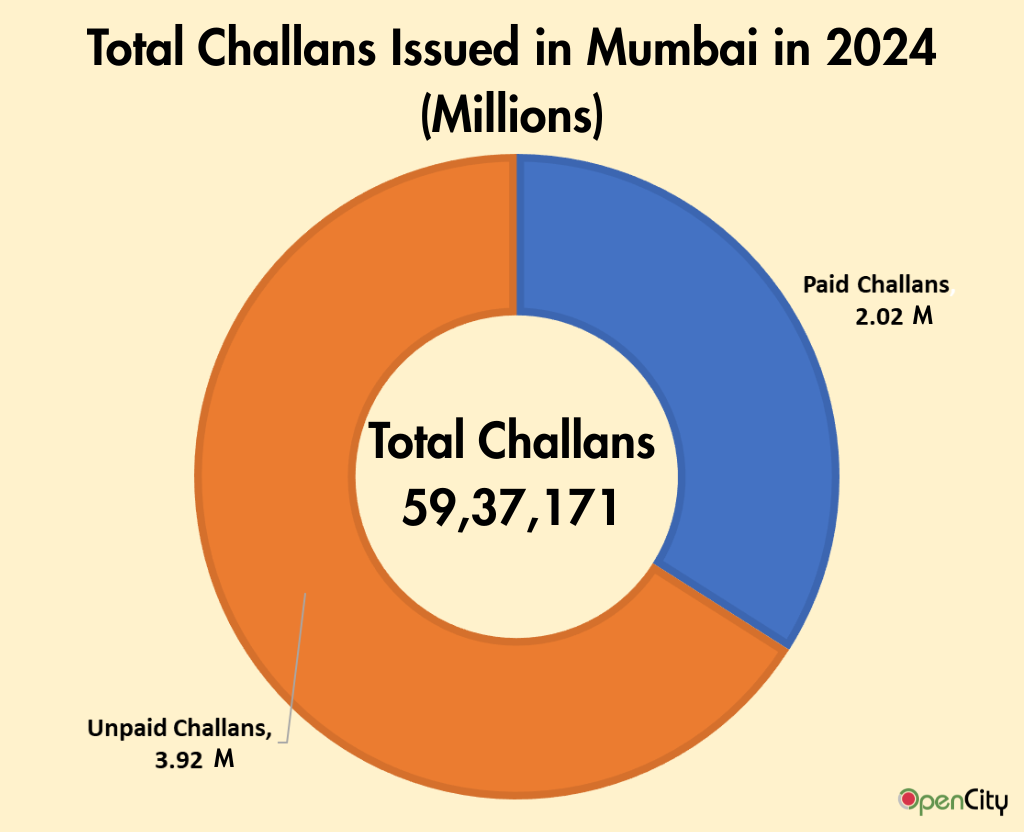
Of the Rs. 478.4 Crore, much less than a third, Rs. 151.06 Cr were paid. The remaining Rs. 327.34 Cr is pending payment from the traffic violators.
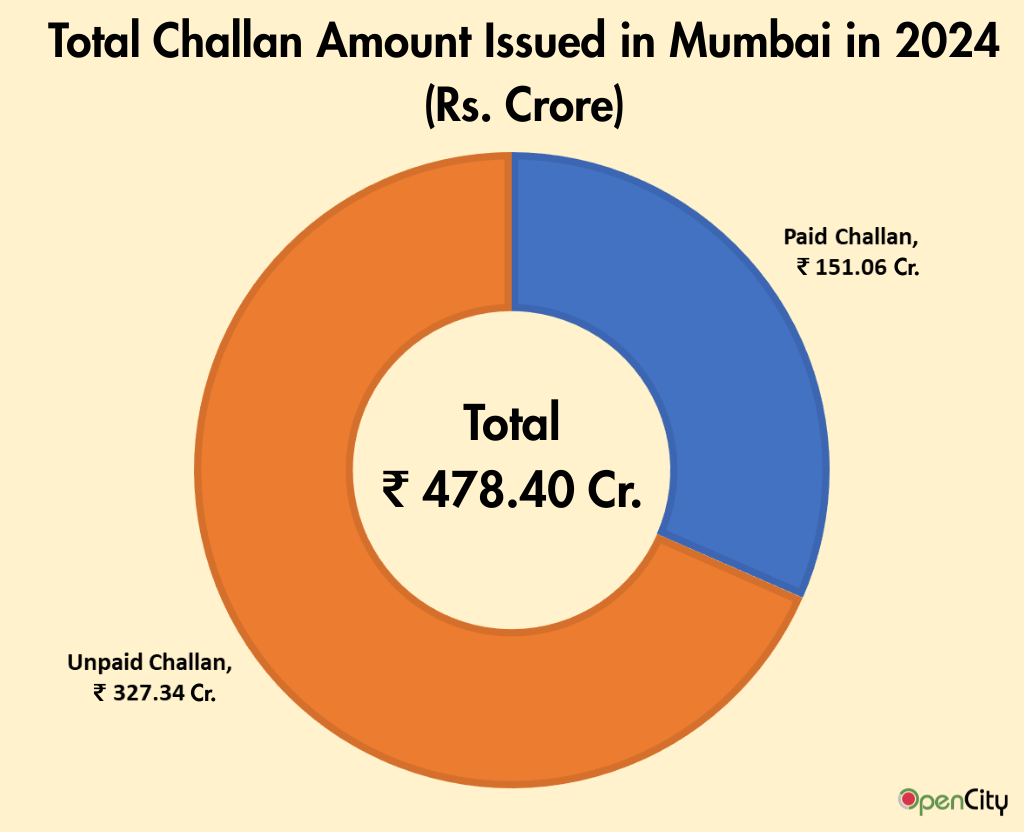
Two-wheelers lead
The largest fraction of vehicles in any Indian city is two-wheelers and the number of violations are also led by them. With the mandatory helmet rule, they are also easy targets for challans.
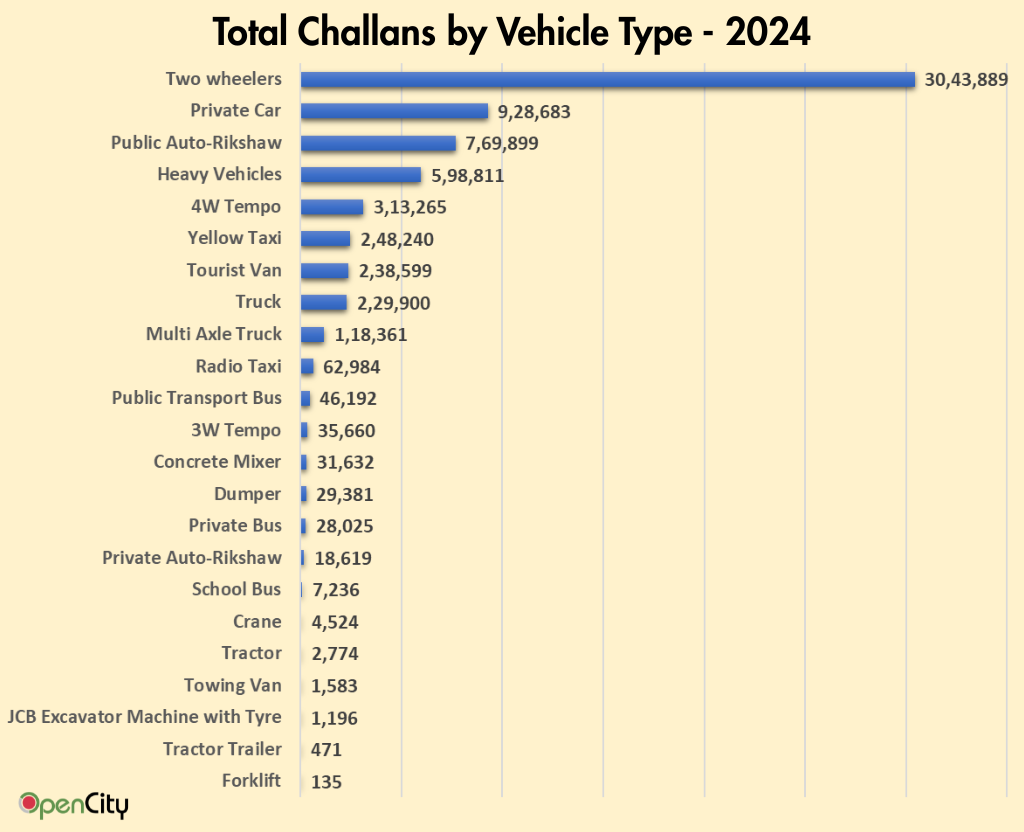
Close to half the challans were issued to two-wheelers followed by private cars, and then auto-rickshaws. An interesting category is “Tourist vans” which were issued almost the same number of challans as “Yellow taxis”.
The Maharashtra Transport Department defines a “Tourist van” as a contract carriage vehicle with 7 to 12 seats including the driver. It needs to have an explicit tourist permit. but given the number of challans, they seem to point towards app-based taxis (Uber/Ola/Rapido).
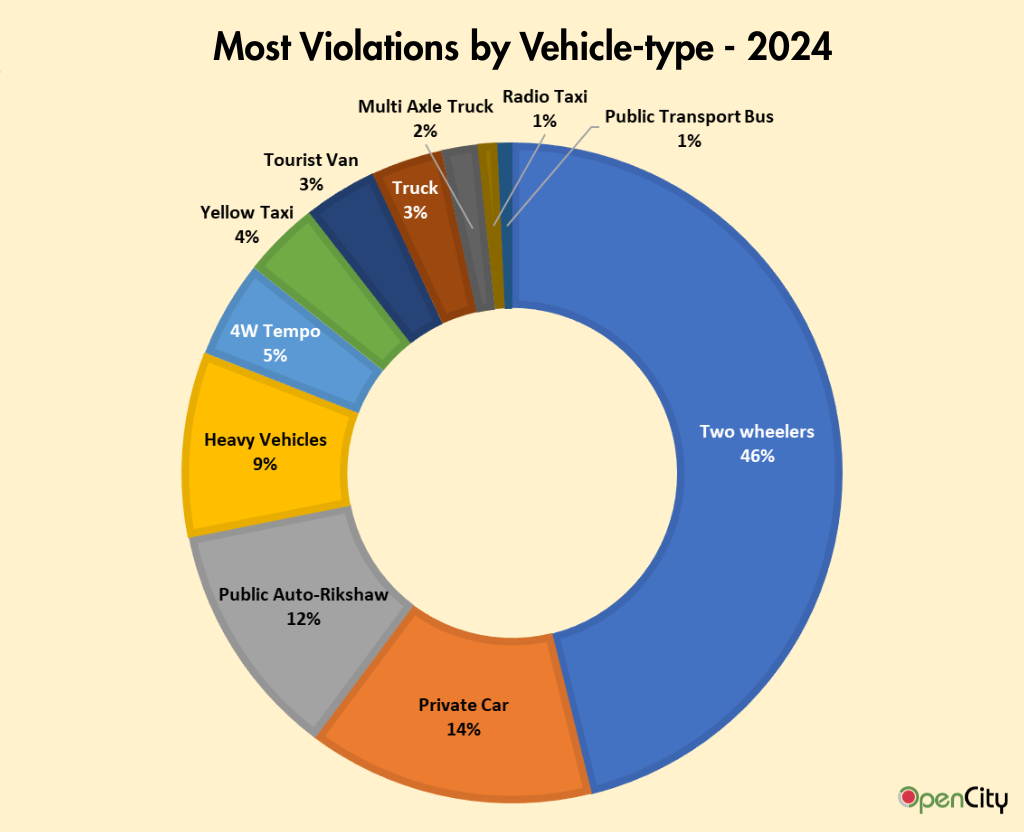
Many violations uncategorised
The largest fraction, or 29%, of the violations are categorised as “Other M.V acts”. This is followed by “Causing obstruction to free flow of traffic” and then helmet-less drivers. Such a large percentage of violations not having a clear category is concerning as having clear data can help target mitigation efforts.
Causing obstruction to free flow of traffic is likely when people are caught by cameras stopped outside the pedestrian crossing lines.
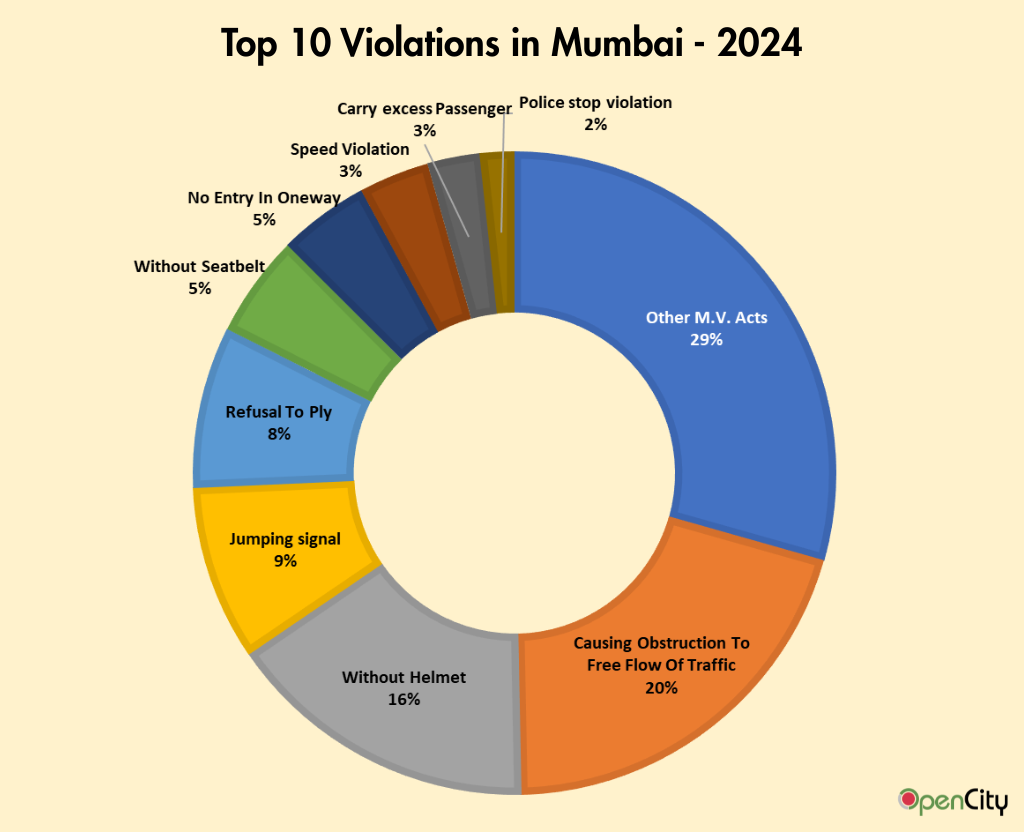
Major violations that affect the safety of other motorists and pedestrians, like wrong side driving and drunk driving, are only a minuscule fraction of the total violations. These are violations that are hard to catch with automation. There is no separate category for using mobile phones when operating vehicles. While one hopes that these challans are also lumped under “Other M.V. Acts”, better clarity is needed.
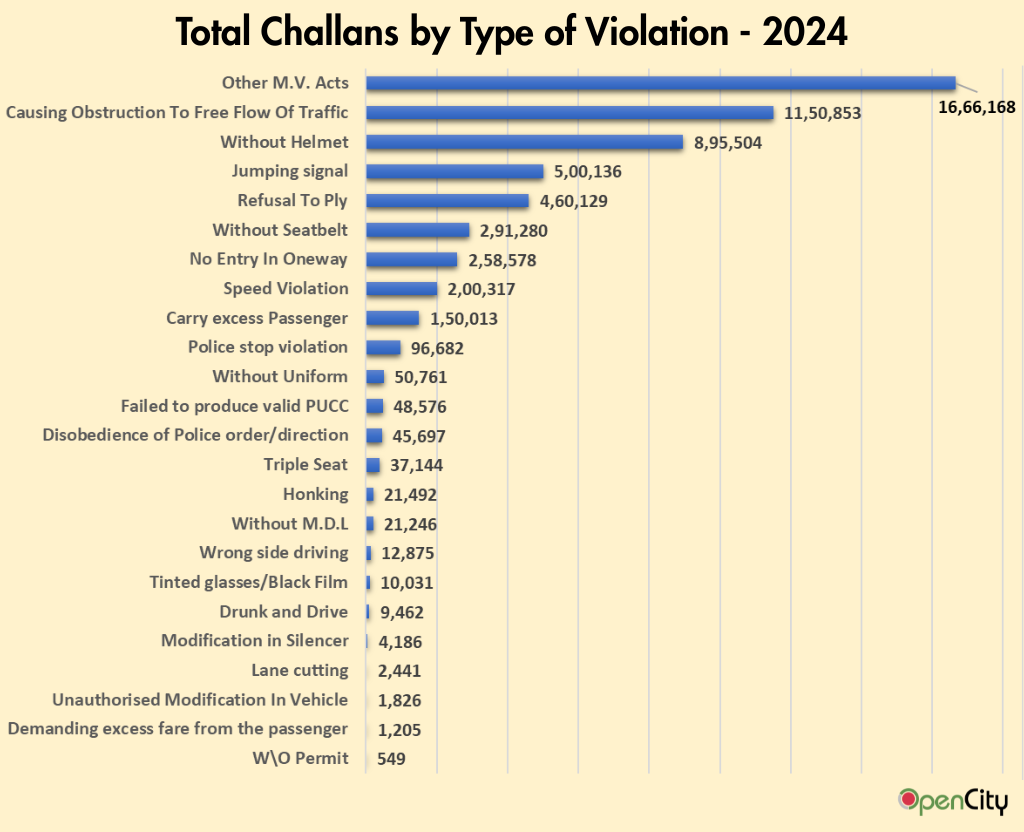
Where are the violations?
The most challans were issued in the Malvani Police Station limits at 48,637 challans worth Rs. 3.64 Crores, followed by N.M Joshi Marg Police Station limits at close to 33,000 challans, worth Rs. 2.88 Cr.
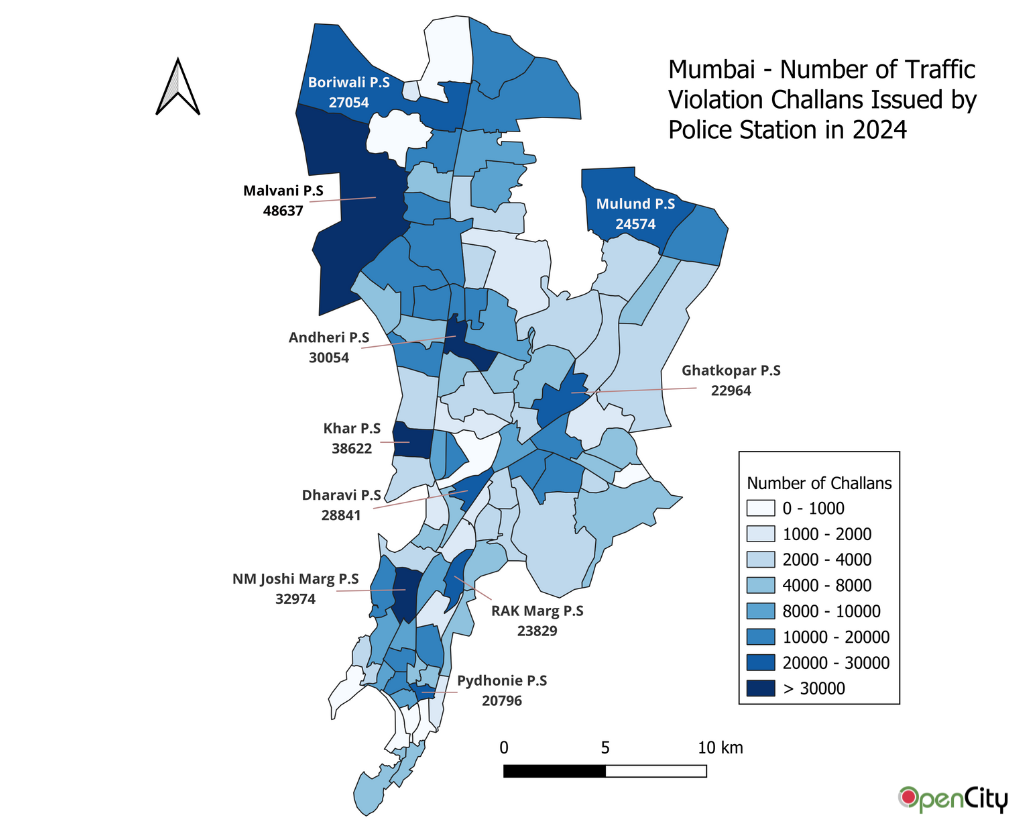
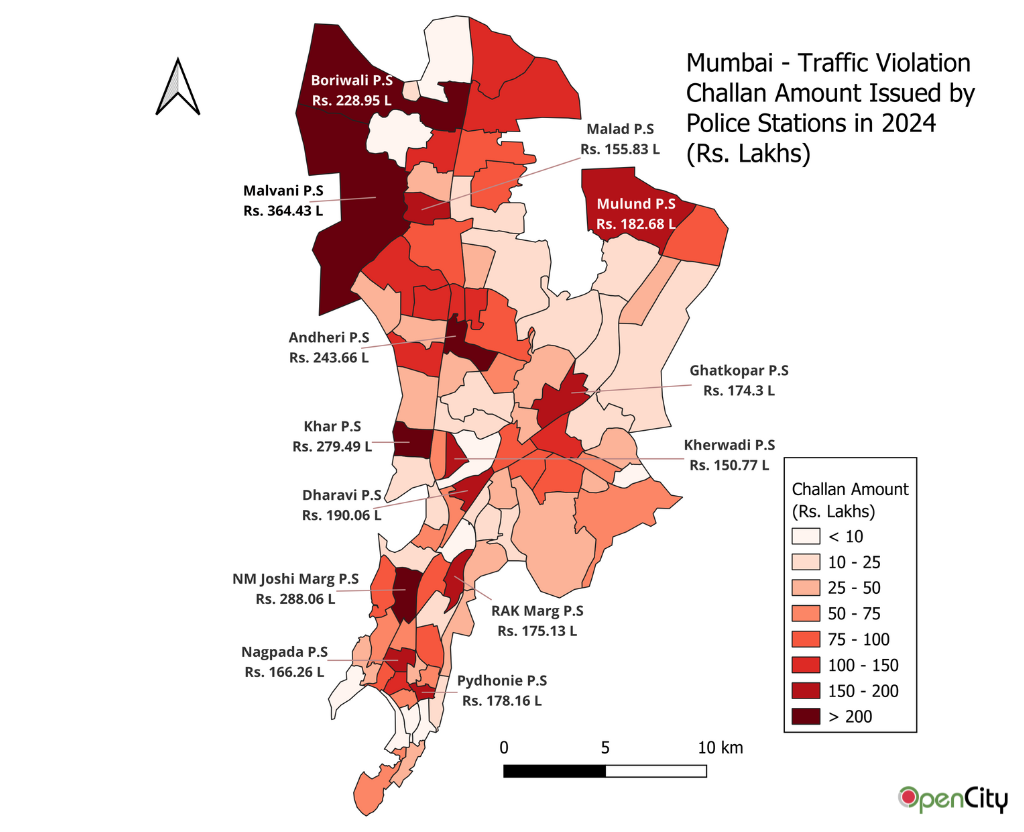
Outside of the police stations, the multimedia cell of the Traffic Police generated the most challans at 5,17,149 challans, worth Rs. 64.28 Cr. However, more than 72% of the challans are unpaid, compared to 67% for the traffic police divisions.
Summary
The data from 2024 yields interesting insights, none more so than the fact that most of the cases are being generated through automation in the form of cameras. While this is a welcome step that can augment and reduce the load on physical policing, there needs to be a system to ensure that these challans are also tracked and the motorists are paying them regularly.
The chief goal of booking traffic violations is better road safety, not just higher number of challans. Generating challans into the system and forgetting about them cannot ensure that. Apart from bringing in revenue, getting motorists to pay will also make sure that they are aware that their on-road behaviour is being watched.
The very small number of dangerous violations like drunk driving or wrong side driving suggests that the Mumbai Police are shifting their focus towards automation instead of on-the-ground checks. This is a trend seen in Bengaluru also, and is also a result of a stagnant and inadequate police force trying to manage traffic that has grown well beyond its capacity.

